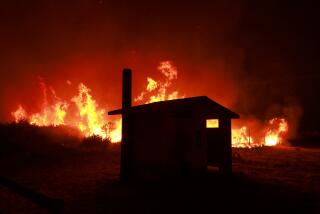What the Bank Insurance Crisis Will Cost You
The Federal Deposit Insurance Corp. is in deep financial trouble and may need to charge banks sharply higher premiums for federal deposit coverage. What does that mean to you, the individual saver?
It means you’re going to pay a lot. It means too that saving at banks is going to get a bit more complicated--and, for the biggest savers, riskier.
Proposed insurance premium hikes will result in a huge increase in banks’ cost of doing business.
Not being the altruistic sort when it comes to their profits, those institutions will eventually pass along at least some of those costs in the form of higher fees for bank services, fewer free services and lower interest rates on deposits.
In addition, the threat of further deposit-insurance premium hikes could make cuts in deposit insurance coverage inevitable, by reducing industry resistance to such reforms. For big-time savers, that could mean the need for more diligence in shopping for banks--or the need to seek alternative investments.
The FDIC’s predicament, in a nutshell, is this:
Because of bank failures and other woes, it’s been paying out a lot more to depositors than it’s been collecting in premiums. With 129 bank failures so far in 1990, FDIC Chairman L. William Seidman has estimated that the insurance fund will incur a net loss of at least $2 billion this year--on top of $5.1 billion in losses in 1988 and 1989.
Accordingly, the fund’s reserves--the money used to pay depositors when banks fail--have fallen from $1.10 for each $100 of insured deposits in 1987 to only 70 cents last year. And they are projected to fall below 60 cents by the end of this year--the lowest level in FDIC history.
A recession or the failure of some huge banks could wipe out the fund entirely, forcing a taxpayer bailout, the General Accounting Office warned.
“Not since its birth during the Great Depression has the federal system of deposit insurance for commercial banks faced such a period of danger and uncertainty,” the GAO said in a report presented to the Senate Banking Committee last week.
“We have a lot of situations that could wipe the fund out,” the GAO report said.
One solution: The FDIC must raise more money. Seidman has already proposed that the FDIC raise its premium assessments against banks next year to 19.5 cents per $100 of deposits, an increase of 7.5 cents from the current 12 cents.
But even that may not be enough. Efforts are under way in Congress to give the FDIC greater discretion to raise premiums further and faster.
A 7.5-cent increase (equal to $7.50 for each $10,000 in deposits) doesn’t sound like much. But it’s a huge cost to banks.
Warren G. Heller, research director at Veribanc, a Woburn, Mass., firm that tracks banks’ financial condition, estimates that the proposed hike would increase banks’ costs by $1.4 billion. That’s 10.7% of the industry’s overall profits of $13 billion in the year ended June 30, Heller says. No small change.
“It is a substantial increase in the cost of being in the banking business,” says Salvatore Serrantino, president of California Research Corp., a financial services consulting firm in Santa Monica.
Serrantino notes that banks’ other costs, such as administration, salaries and the like, have generally been falling as a percent of total assets. So this is a serious matter for banks.
How are you going to pay for this?
At first, banks--under competitive pressures--may absorb those costs through lower profits. But eventually, it’s going to hit savers in several ways, suggests 100 Highest Yields, a North Palm Beach, Fla., newsletter that tracks banking services:
* Lower interest rates. Your yields could be less than they would be otherwise.
* Higher fees. Banks could raise monthly maintenance fees on your checking or savings accounts. They could boost fees charged when your account falls below minimum-balance requirements, or when you write too many checks. They might hike bounced-check charges.
* Fewer free services. Banks could charge you extra to send back canceled checks. Or you could pay more for cashiers’ checks, fund wires or other bank services.
* Prorated interest earnings. Some Mississippi and Alabama banks pay interest only on a portion of their money-market deposit and interest-paying checking accounts, the newsletter says. They don’t pay on the part set aside to meet federal reserve requirements. Other banks may adopt similar policies, the newsletter says.
You’ll also pay because hikes in deposit insurance--and concern about a taxpayer bailout similar to the one for the savings and loans--mean that deposit insurance reform is virtually inevitable, Heller says.
Several proposals are under consideration, including limiting insurance to $100,000 per person, not per account. Regulators may also shift more of the risk to you; you might be required to eat, say, 10% of your deposits should your bank fail.
In any event, the bottom line is clear: The biggest depositors--those with accounts approaching $100,000--will have to exercise more care in selecting who they bank on. Or they may be forced to seek out other savings vehicles, including money-market mutual funds or Treasury bills.
More to Read
Inside the business of entertainment
The Wide Shot brings you news, analysis and insights on everything from streaming wars to production — and what it all means for the future.
You may occasionally receive promotional content from the Los Angeles Times.










